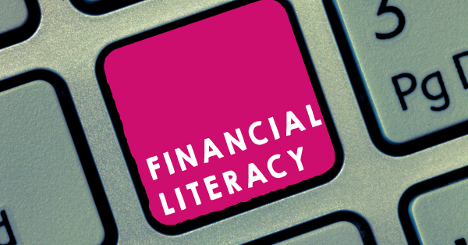Financial Literacy Can Engage and Motivate Reluctant Math Students

Financial Literacy Can Engage and Motivate Reluctant Math Students
Financial Literacy Can Engage and Motivate Reluctant Math Students
Financial Literacy Can Engage and Motivate Reluctant Math Students
Financial Literacy Can Engage and Motivate Reluctant Math Students
Financial Literacy Can Engage and Motivate Reluctant Math Students
Financial Literacy Can Engage and Motivate Reluctant Math Students
Understanding the Reluctance Towards Math
Common Reasons for Math Anxiety
Math anxiety is a widespread issue among students. Here are some common reasons why students may develop a reluctance towards math:
- Negative Experiences: Past failures or struggles in math can lead to a fear of the subject.
- Perceived Irrelevance: Many students fail to see how math applies to their everyday lives.
- Lack of Confidence: Students who lack confidence in their math abilities may avoid the subject altogether.
- Teaching Methods: Traditional teaching methods may not engage all learning styles, leaving some students behind.
The Importance of Engagement
Engaging students in math is crucial for their academic success and future opportunities. When students see the value and application of math, they are more likely to put in the effort to understand and excel in the subject.
The Role of Financial Literacy in Math Education
What is Financial Literacy?
Financial literacy involves understanding and applying various financial skills, including personal finance management, budgeting, saving, investing, and understanding credit and debt. It equips individuals with the knowledge and skills needed to make informed financial decisions.
Benefits of Financial Literacy for Students
Integrating financial literacy into math education offers several benefits:
- Practical Applications: Demonstrates the real-world relevance of math.
- Life Skills: Prepares students for financial independence.
- Increased Engagement: Makes learning math more interesting and relatable.
- Enhanced Problem-Solving Skills: Encourages critical thinking and analytical skills.

How Financial Literacy Can Engage Reluctant Math Students
Making Math Relevant and Practical
One of the main reasons students struggle with math is the perception that it lacks real-world application. Financial literacy bridges this gap by showing students how math is used in everyday financial decisions.
Real-Life Scenarios
Incorporate real-life financial scenarios into math lessons, such as:
- Budgeting: Teach students to create and manage a budget.
- Saving and Investing: Explain the principles of saving money and the basics of investing.
- Credit and Debt: Discuss how credit works and the importance of managing debt.
Enhancing Problem-Solving Skills
Financial literacy requires students to apply mathematical concepts to solve practical problems. This enhances their problem-solving skills and helps them develop a deeper understanding of math.
Example Problem: Budget Planning
- Scenario: A student receives a monthly allowance of $100. They need to budget for expenses, savings, and leisure activities.
- Math Skills: Addition, subtraction, percentages, and critical thinking.
Building Confidence Through Financial Literacy
By mastering financial concepts, students can build confidence in their math abilities. Understanding how to manage money and make financial decisions empowers students and boosts their self-esteem.
Positive Reinforcement
Provide positive reinforcement and celebrate students’ successes in applying math to financial literacy. This can help build their confidence and reduce math anxiety.
Implementing Financial Literacy in the Classroom
Curriculum Integration
Integrating financial literacy into the math curriculum can be done in various ways:
- Standalone Modules: Create standalone financial literacy modules within the math curriculum.
- Cross-Disciplinary Projects: Collaborate with other subjects, such as economics or social studies, to create cross-disciplinary projects.
Sample Curriculum Outline
| Module | Math Skills Covered | Financial Concepts |
| Budgeting Basics | Addition, Subtraction | Budgeting, Expense Tracking |
| Saving and Investing | Percentages, Multiplication | Savings Accounts, Interest Rates |
| Credit and Debt | Division, Decimals | Credit Cards, Loans |
| Financial Goal Setting | Algebra, Graphing | Long-Term Financial Planning |
Engaging Teaching Methods
Adopt engaging teaching methods to make financial literacy lessons interactive and enjoyable:
- Group Projects: Encourage collaborative learning through group projects and discussions.
- Guest Speakers: Invite financial experts to speak to students about real-world financial management.
- Interactive Tools: Use online tools and apps that simulate financial decision-making.
Success Stories: Financial Literacy in Action
Case Study 1: Improved Engagement in High School Math
A high school in California integrated financial literacy into its math curriculum. Students participated in a year-long project where they managed a virtual budget, invested in a simulated stock market, and learned about taxes and loans. The results were remarkable:
- Increased Engagement: Student participation in math classes increased by 30%.
- Higher Test Scores: Math test scores improved by an average of 15%.
- Positive Feedback: Students reported feeling more confident in their math skills and more prepared for financial independence.
Case Study 2: Middle School Financial Literacy Program
A middle school in Texas implemented a financial literacy program for seventh graders. The program included lessons on budgeting, saving, and basic investing principles. Key outcomes included:
- Improved Math Skills: Students demonstrated a better understanding of math concepts related to percentages and decimals.
- Enhanced Critical Thinking: The program promoted critical thinking and problem-solving skills.
Long-Term Interest: Students expressed interest in learning more about personal finance and economics.

FAQs About Financial Literacy and Math Education
How does financial literacy improve math skills?
Financial literacy improves math skills by providing practical applications for mathematical concepts. When students see how math is used in real-life financial decisions, they are more motivated to learn and understand these concepts.
Can financial literacy help reduce math anxiety?
Yes, financial literacy can help reduce math anxiety by making math more relevant and accessible. Understanding financial concepts can build students’ confidence in their math abilities and reduce their fear of the subject.
What are some resources for teaching financial literacy?
There are many resources available for teaching financial literacy, including:
- National Endowment for Financial Education (NEFE)
- Jump$tart Coalition for Personal Financial Literacy
- Council for Economic Education
How can parents support financial literacy at home?
Parents can support financial literacy at home by:
- Discussing Finances: Talk to children about budgeting, saving, and spending.
- Providing Allowances: Give children an allowance and help them manage it.
- Using Real-Life Examples: Use everyday situations to teach financial concepts.
Conclusion
Incorporating financial literacy into math education can transform the way reluctant students perceive and engage with math. By making math practical, relevant, and essential for real-life success, educators can motivate students and help them develop critical skills for their future. Financial literacy not only enhances math skills but also prepares students for financial independence and responsibility, setting them up for success in both their academic and personal lives.
By adopting engaging teaching methods and integrating real-life financial scenarios, educators can create a dynamic learning environment that captures students’ interest and fosters a positive attitude towards math. The success stories and practical examples demonstrate the significant impact financial literacy can have on student engagement and achievement, making it a valuable addition to any math curriculum.
[bdp_post_carousel show_tags=”false” show_comments=”false” show_category=”false” dots=”false” limit=”10″ orderby=”rand”]
You can signup for free
